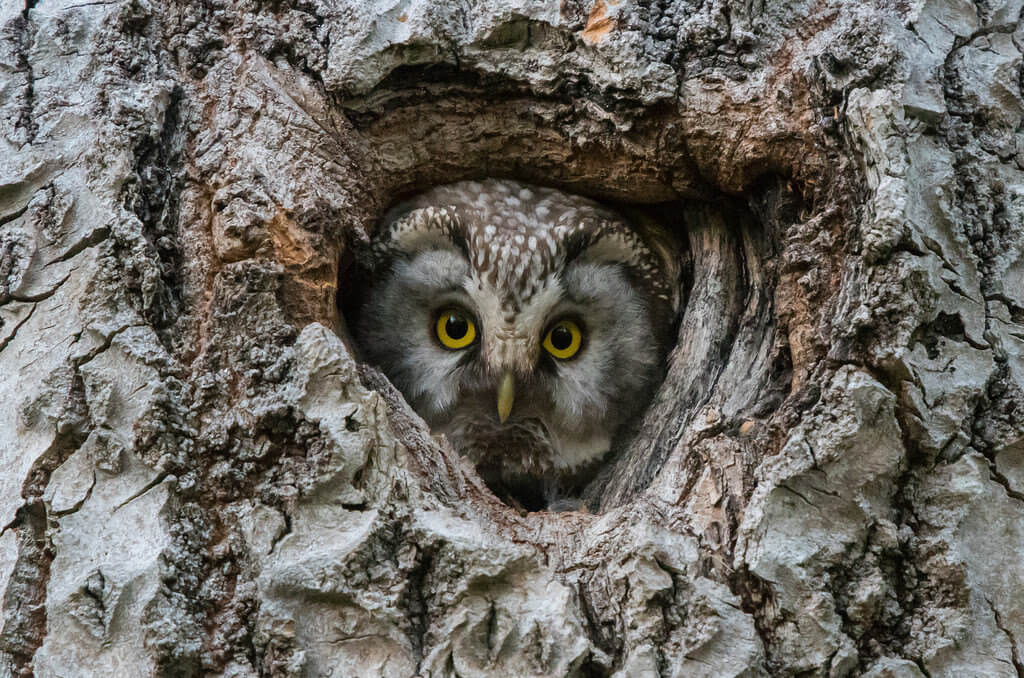
Tim writes: this small owl inhabits in the boreal forest zone across Scandinavia, Siberia and North America, nesting in old woodpecker holes or nest boxes. Although it is relatively numerous it is one of Europe’s most difficult owls to see as it is largely nocturnal, though in the short summer nights at high latitudes it is active in daylight. It feeds mainly on voles, but will also eat birds and insects. I photographed this female in Swedish Lapland.
The name commemorates Swedish naturalist Pehr Gustav Tengmalm (1754-1803). The naturalist Gmelin named it Strix tengmalmi in 1786, believing Tengmalm was first to distinguish it. However, as was often the case, Linnaeus got there first. He was aware of the owl before Tengmalm was born and it featured in his Systema naturae in 1758. The name Boreal Owl is used in North America for this species, and that name seems to be gaining ground in Europe.
Its scientific name is Aegolius funereus. Aegolius cames from a Greek word meaning a bird of ill omen, and funereus means funereal, probably relating to the theme of ill omen. It is an incredibly rare visitor to Britain with no records for over 30 years, the last being a bird on Orkney back in 1986.
[registration_form]
A nice picture Tim, at last of a bird I’ve not only seen but our ringing group in its many visits to Sweden in autumn has ringed well over a hundred. Very interesting birds in the hand aged on the number of generations of flight feathers. First years have one generation, adults up to three or four, there is a very good paper on it in Auk, Tim Hipkiss has authored several good papers on them too. They take a lot of birds in winter and whilst Little Owl sized have much bigger heads and long needle like black talons, which they are very adept at getting well into hands!. I was led to believe the funereus was because of the very dark juvenile down but I could be wrong.